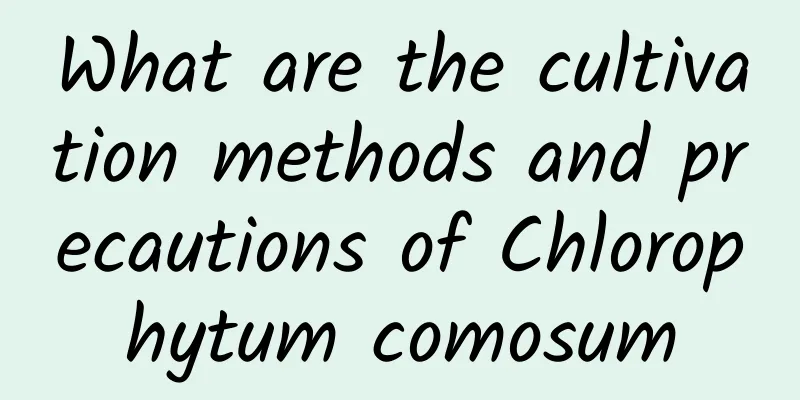What are the cultivation methods and precautions of Chlorophytum comosum

Introduction of Chlorophytum comosumChlorophytum comosum, also known as Thousand-leaf orchid, Thousand-leaf spider plant, and iron wire orchid, is a perennial evergreen shrub of the genus Chlorophytum in the Polygonaceae family. The plant grows in a hanging shape. The stem is reddish-brown and very slender. The leaflets are alternate, and the leaves are heart-shaped or round in shape. Cultivation method of Chlorophytum comosumChlorophytum comosum prefers a warm and humid semi-shady environment and is not resistant to high temperatures and strong sunlight. If the temperature is above 30 degrees in summer, it needs shade and cooling. It has a strong adaptability to soil, but it is best planted in loose, fertile, well-drained soil. Watering methodChlorophytum comosum grows vigorously in spring and autumn and has a greater demand for water, so it needs sufficient watering to keep the soil in the pot moist, but there should be no accumulation of water, otherwise the roots will rot if soaked in water for a long time. Spraying the branches and leaves with clean water frequently can make the leaves clean and full of vitality. Fertilization methodChlorophytum comosum has a greater demand for fertilizer. During the peak growing season, apply thin liquid fertilizer every 10-15 days with a low concentration. The plant enters a dormant period in winter and has less demand for fertilizer, so stop applying fertilizer. Pruning methodsAs the thousand-leaf spider plant grows, the yellow and old leaves at the base need to be cut off. In addition, the plant has a strong germination ability and grows fast, and it is easy to overflow the pot. Therefore, the potting soil needs to be changed every two years, and the roots can be trimmed when changing the pot. Precautions for growing Chlorophytum comosumIn summer and autumn, the leaves of Chlorophytum comosum often become yellow and wilt. They need to be moved to a semi-shaded place and sprayed with water on the leaves and the environment frequently to alleviate the problem. In addition, excessive watering will cause root rot. At this time, it is necessary to change the pot and soil in time and maintain it in a cool, humid, semi-shaded environment. Pay attention to spraying more water and watering less. |
<<: Can orchids be grown in coconut shells?
>>: What fertilizer is good for grapes?
Recommend
How can the weeping angel safely survive the winter? Is the weeping angel evergreen?
1. How to safely survive the winter 1. Maintain t...
How to grow the lucky tree and what to do if the roots turn yellow
1. How to breed 1. Light: It is a very light-lovi...
How to care for purple water lily? How to care for purple water lily?
Purple Water Lily Growing Conditions Purple water...
The efficacy and function of Oncidium
Ornamental value Oncidium is native to South Amer...
Is honeysuckle a shade-loving or sun-loving plant?
Does honeysuckle prefer shade or sun? Honeysuckle...
How to propagate Calceolaria
Seed propagation The best time to propagate Calce...
When is the best time to plant beans?
Snap beans , also known as cowpea, are a plant na...
Can pig bones be used as fertilizer?
Pig bones as fertilizer Pig bones can be used as ...
What soil should be used to grow white palm
1. Soil requirements (1) Looseness: Meeting this ...
Hydrangea cutting time and method
Hydrangea cutting time Hydrangeas can be propagat...
What to do if the leaves of hibiscus turn yellow
one. Too much water Generally, we have to find ou...
How to deal with Phalaenopsis after flowering
1. Check the root system Uproot the plants after ...
What to do if Desert Rose loses leaves
Desert roses drop leaves because they are not ada...
Grafting methods and techniques for old grape vines. It is important to choose the best time for grafting.
Old grape vines are generally grafted using the c...
Cultivation methods and precautions of papaya begonia
1. Methods 1. Soil: It has strong adaptability an...









